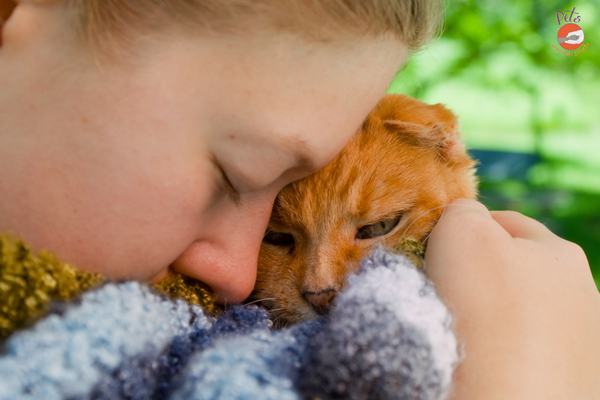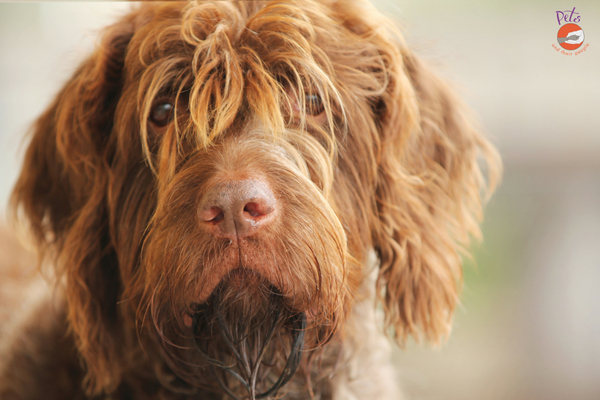Hospice and End of Life Care
The unique relationship of pet and pet owner is one of unconditional love and responsibility. As pets advance in age or are diagnosed with a disease that cannot be cured, discussions around quality of life and pain control are really important for the wellbeing of your pet, but also for the emotional and mental wellbeing of you as the pet owner. Having a trusting relationship with your veterinary staff will make this process easier, and we appreciate that trust you place in our practice.
In increasing focus on this complex and emotional time of your pet's life, our job as a veterinary staff is also complex. Veterinary hospice is family-centered, medically supervised, and team-oriented. More frequent physical exams and consultations, sometimes available via phone to reduce pet stress, are required to give your pet the best care we can.
During this time, we will work with pet owners to:
- Ensure you have an understanding of how a disease or condition will progress - Common diseases are highlighted in these handouts by our colleagues at Lap of Love
- Perform assessments of your pet's pain and discomfort
- Know what testing and treatment options are available
- How to perform necessary nursing care and alter the home environment for your pet’s needs
- Monitor disease progression and quality of life
- Counselling on if euthanasia is the right option for your family pet, and if so, when
- Prepare for the loss of a pet—what to expect and what options you have
- Offer support after your pet has passed away
Pets and Their People are working to develop a comprehensive hospice and end of life care program, with lots of resources listed here on our website. These were developed in following the guidelines of the International Association for Animal Hospice and Palliative Care. They explain what pet hospice is on their website.
Euthanasia

The word euthanasia has Greek origins. 'Eu' - means 'goodly or well', and 'thanatos' means 'death'. So, euthanasia means 'good death'. Euthanasia is a difficult topic to discuss for most pet owners; it is both a profound responsibility and a process that causes stress and grief. We're trained to help you through this.
While our ability to control discomfort and pain in animals has improved greatly over the last decade, we are still unable to ensure the same levels of quality of life for most pets compared to that which humans are afforded. Most pet owners are not equipped to provide in-home intensive nursing care, and the nature of animal stress and well-being makes hospitalised palliative care inappropriate. So at some point, most pet owners are faced with making a decision to euthanise their pet to ensure their death is the best it can be, free of pain and stress.
Euthanasia is a very personalised and private experience. If you have had euthanised a pet in the past, the experience may have left you with some level of peace or caused ongoing distress. If we understand your feelings about past experiences, it helps us meet your expectations and improve the process for you and your pet. We'll do our best to accommodate requests you may have. You can learn more about your options and communicate your wishes via this form.
Some pet owners prefer to have their pet euthanasied in the comfort of their home. At this time, Pets and their People offers an at-home service which can be arranged by contacting our reception staff.
If you wish to attend the veterinary hospital, generally we suggest booking euthanasia appointments during times of day when the clinic has fewer consultations. This allows the staff plenty of time and the environment is peaceful. Our staff can help you pick a time that is best for this, as well as one that works for you and your family. If car trips cause a great deal of stress for your pet, let us know. We may be able to dispense anxiety medication you can give at home to help decrease the stress of a car trip and vet visit.
We will provide a comfortable spot for your pet to rest on the floor or the examination table, wherever they are most comfortable. You may bring their own bed and your pet’s favorite treats and toys if you wish. The environment will be subdued in noise and light, and a calming pheromone will be sprayed. The veterinarian will discuss options for sedation and intravenous catheter placement. We'll explain how the euthanasia solution is administered and the physical process of death.
Our staff will help you decide what you would like to do with your pet's remains and help make those arrangements. You can make service payments before the euthanasia is performed, so that you may leave the clinic without standing at the reception desk while upset.
Once you and your pet are ready, a high dose of pentobarbitone is administered to provide a smooth transition from sedation to unconsciousness, and then euthanasia.
Memorials
There are three providers of cremation services in Adelaide - Animal Welfare League, Eden Hills and Angel’s Ashes. While we work directly with the Animal Welfare League, we can facilitate arrangements through other providers should you so choose. Each service will collect your pet from your home or the veterinary hospital, depending on your wishes. Home collection must be organised directly with these providers and their prices vary for each service.
Our colleague at Farewell My Little Friend can also assist with burial options including wooden caskets, placement of ashes and memorials, transfer of remains, funeral services, and many other aspects of care required at this difficult time.
There are many ways to memorialise your pet other than those based on their physical remains.
- Events: Having a picnic with family and friends where everyone can share stories about your pet and look at pictures can help, similar to a wake for a human family member. A request for donations in your pets honour to a welfare organisation helps their memory life on.
- Pictures: Sharing pictures on social media lets friends know you are going through a tough time. Pictures can be compiled online and printed as hardbound books. Pictures can be used as subjects by painters to create a portrait.
- Plants and gardens: A memorial stone or plant can serve as a quiet place to honour your pet in their favorite resting spot, indoor or out. If plants are potted, it allows you to move them along with you should you change homes.
- Pawprints and noseprints: Clay or ink impressions make beautiful keepsakes, and can be used to make custom jewelry pieces.
The AWL can make customised nose and paw prints of your pet. If this is a specific request you want to ensure happens, please make note with our staff. Clay pawprint kits are also available from various online retailers; we can make a clay imprint with a kit you provide.

Support
The process of hospice is difficult and complex, combining overwhelming love, guilt, grief, and fear. We hope that by providing information and listening to your concerns, our team can help ease the distress you feel as your pet approaches the end of his or her life. You will most likely experience these emotions both before and after your pet dies, and that is normal. We can also offer support to you via a network of allied professionals. Anastasia Goussios is a registered psychologist, with advanced training in pet owner bereavement. Consultations withher service, Howling at The Moon, can be found via calling 0418 826 145 or emailing anastasia@compassionfatigue.com.au.
Children and Bereavement
Children may initially grieve, but often cope surprisingly well with frank discussions about death, dying, and providing good death once given time to process it. The loss of grandparents or other loved ones may help prepare them for the death of a pet. They may also continue to grieve for a longer time, being unsettled at seemingly unrelated times.
Discussing euthanasia before the consultation isn't easy, but it prepares your child to say goodbye – which improves the experience for the pet and that is our main focus. Answer all their questions and if you can't, ask us for help. Answer them honestly and without phrases like 'putting to sleep' or 'special needle'. We try to avoid using such terms in order to avoid creating fear about going to bed at night or nap time. We also don't want them to become fearful of veterinarians, doctors, or needles.
Depending on their age, drawing a picture or writing a poem to their pet might be a good way to help them grieve before or after the euthanasia. Allow them to be sad; it is a sad time. Death is part of life, and death of a friend is sad. Answering their questions and helping them with their bereavement will also trigger your feelings of grief, too. Sometimes being sad together is best for both parent and child.
You know your children best and are best placed to know if they are ready to be present for euthanasia. If your child is likely to be inconsolable during the euthanasia visit, this will in turn upset you and your pet; it might be best to make arrangements for a babysitter. If they weren't there, tell them the truth about what happened – the pain had to be taken away and the only way to do that was a powerful medicine that helped your pet die in the best way possible.